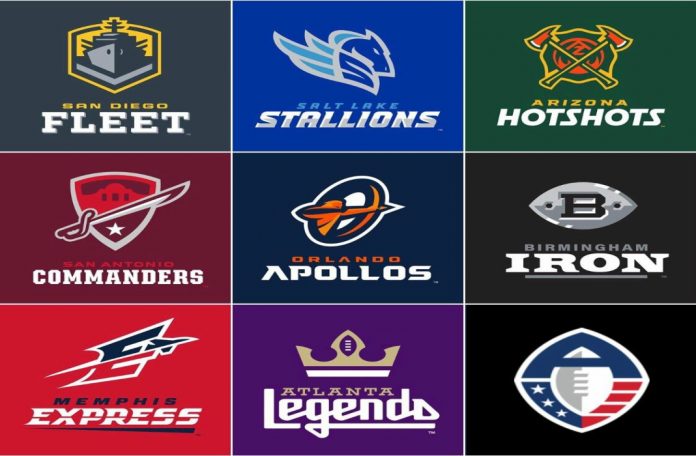This weekend, American football fans got a pleasant surprise. The Alliance of American Football debuted. The AAF’s is currently consisting of eight teams – the Arizona Hotshots, Orlando Apollos, San Antonio Commanders, Salt Lake Stallions, Atlanta Legends, Birmingham Iron, San Diego Fleet, and the Memphis Express. Normally, American football leagues outside of the NFL don’t necessarily succeed or stay relevant, but surprisingly the AAF’s debut was extremely successful. The primetime match-up for the AAF on Saturday night between the Orlando Apollos and the San Diego Fleet averaged a staggering 3 million views (via CBS), outdueling ABC’s primetime NBA match-up between two MVP candidates in Paul George and James Harden averaging 2.5 million views (via ABC). Considering leagues like the USFL and the XFL have fizzled out after tremendous starts, how can the AAF maintain this high level of success?
Acquire “Star Level” Talent
After watching the first AAF games, it became very clear that the league lacks legitimate talent. Even though 83% of the players in the AAF have played at least one NFL snap, they were never successful in the NFL. Currently, the league is advertising players such as Trent Richardson and Christian Hackenberg as their main stars. While they might attract fans and viewers to see if they can still play,
Within the next few years, expect the AAF to try to entice players from the CFL to join the AAF. Even potential unsigned high name NFL free-agents who still want to play football can be pitched to join the league. This is similar to the current process of how the AAF drafted its players, but players had to want to be in the AAF, not just be signed. It also doesn’t help that no one expected the AAF to be a major hit, so players unsure of their NFL future may have been extremely reluctant to join a brand new football league, instead of remaining a free agent. Not only will more talented players help the product that’s being marketed, but it’ll also allow the league to promote fresh new stars.
Remain Unique
Already, the AAF has found subtle quirks that no other football league has. They’re the first “professional” American football league to eliminate the kickoff. Not only does this speed up the pace of play, but it also eliminates the most dangerous play in football. As a football purist, I loved the kickoff. However, seeing it eliminated really does make the game faster and more exciting.
This is where the AAF really separates itself from the NFL and any other pro sports league. They took the risk of changing the construct of how football is played. They basically took out zero coverage from the game, allowing defenses to rush a maximum of five players at once. This makes for more intricate schemes to get to the QB. The roughing the passer rules are extremely lenient, as well, so if one does get to the QB they can “lay the boom” because of the difficulty of blowing up an offensive line with only a few players rushing.
They also eliminated the PAT. It forces teams to go for two after every touchdown. Not only does this make the game more exciting, but it also allows the defense to potentially get a momentum swing by getting a turnover and running it back for two. They also have a much better overtime rule than the NFL. It allows both teams to possess the ball on the 10-yard-line. If one team has the lead after that they win, but if the score is tied the game ends in a tie. These are rules NFL fans have been asking for, and the AAF has them.
With the AAF separating itself from the NFL and other leagues, they’ll remain relevant. But with the NFL trying to maintain viewership, don’t be surprised if they adopt some of the AAF rules. This is where the AAF will sink or swim. They came up with revolutionary ideas, and they’ll have to continue to do so. At the end of the day, football is a business, and you’re going to have to do something to separate yourself from the top dog.
Potential Mergers
As of right now, the AAF is the only other “traditional” football league in America. Next year, the XFL is rebooting once again under Vince McMahon, essentially creating competition for the AAF. They’ll have almost the same TV schedule as the AAF and will competing for ratings. The one thing football fans have learned is that two non-NFL football leagues can’t survive at one time. Trying to compete with the NFL and another league is bound to be challenging. Here’s where the merging comes into play.
Theoretically speaking, if the AAF and XFL pull in extremely large fan bases, it only makes sense for them to merge into one league. Not only would it pull in more money, brand deals, TV deals, and quality talent to each league, it allows them to stop competing for TV time.
If the XFL and AAF merge successfully, the NFL might want to sink their teeth within the new league. Personally, the NFL buying the AAF and XFL seems unlikely, but a partnership is possible. In a brief conversation I had with a few of my colleagues here at PerSources, we saw the NFL possibly making this into the NFL’s form of the NBA’s G-League. It’d be a middle-ground between college and the NFL. S
Right now, the AAF shows no sign of slowing down. Their creativity in terms of player safety and pace of play will keep people interested for at least this season. However, with the resurrection of the XFL, this may become difficult. Merging with the XFL and making some deal with the NFL will cement the AAF as one of the staple major sports leagues in the U.S.
Twitter: hawk_persources

